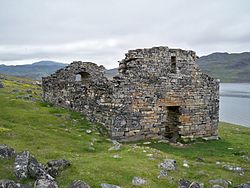
Medieval architecture in North America is an anachronism. Some structures in North America can however be classified as medieval, either by age or origin. Most of these were disassembled in Europe and reconstructed in whole or in part in North America. Often these are museums or museum exhibits. In rare cases these structures are seen as evidence of pre-Columbian trans-oceanic contact. Although much of this is pseudoscience, these buildings are of interest to American scholars of medieval architecture.